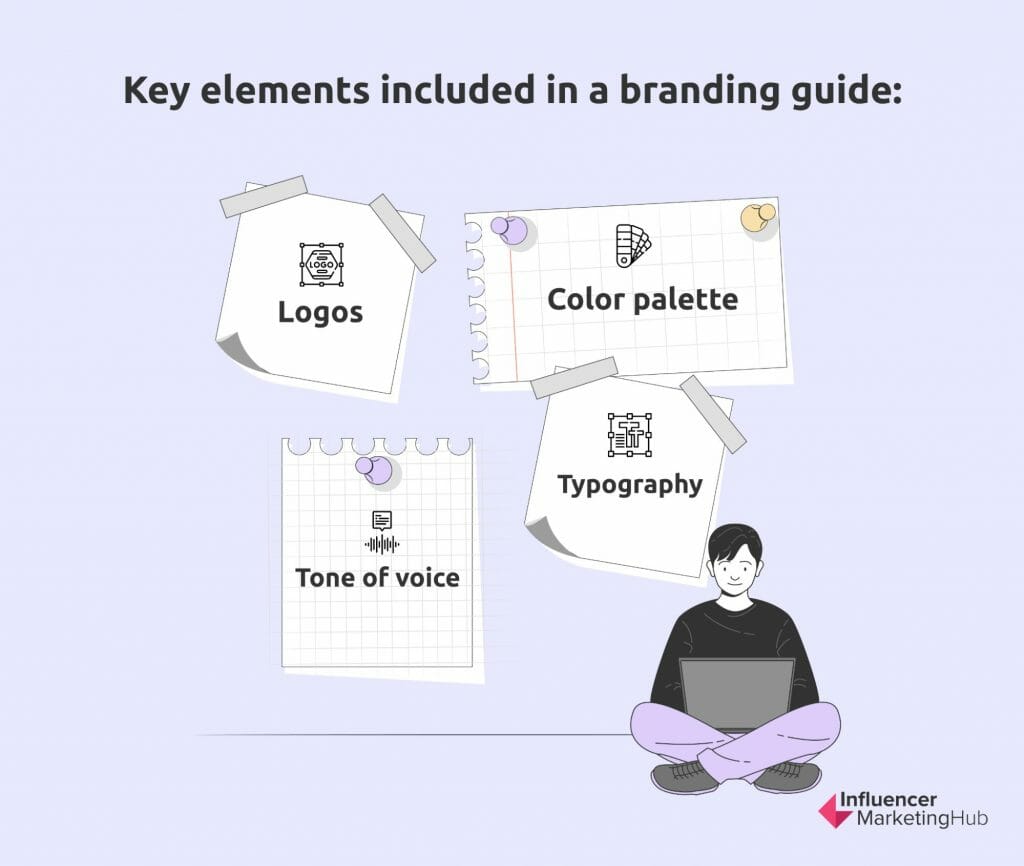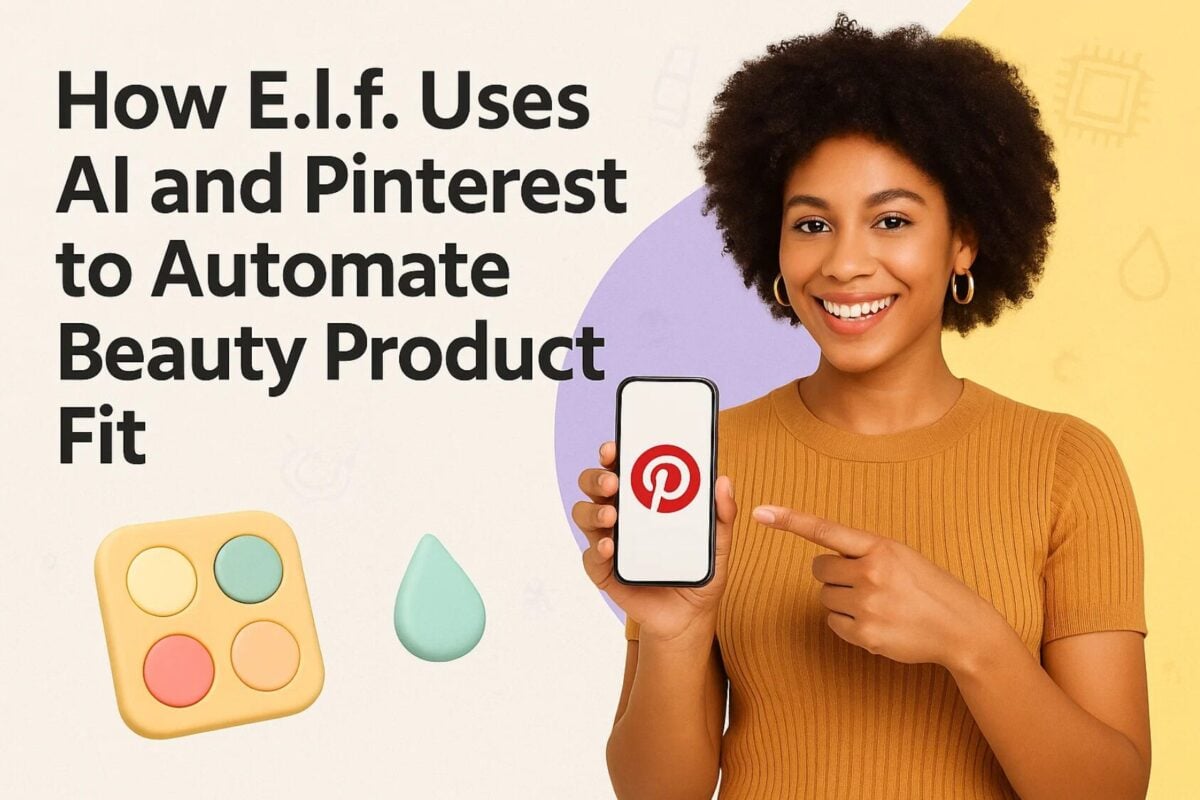Great brands don’t appear by accident. It takes consistency and strategic branding strategies to build world-renowned brands that are instantly recognizable. And building a memorable brand requires being extremely strategic with the way you present your brand to the world–from the overall look and feel to the way you communicate to your audience.
That’s where a branding guide comes in, providing you with a set of guidelines on how to present your brand to your audience. In this post, we’ve compiled some of the best examples of branding guides from leading brands to help you understand how you can build your own.
12 Best Branding Guide Examples to Inspire You:
What is a Branding Guide?
A branding guide, also sometimes called a brand book or a brand style guide is a set of guidelines on how to present your brand to the public. It outlines the various rules to follow to maintain a consistent brand identity. As such, a branding guide will typically include visual and design guidelines as well as brand messaging rules.
This serves as a guide for your internal teams who are responsible for developing content, managing client/customer relationships, and other aspects that involve brand communications. Moreover, it brings clarity to partners and vendors about how you want your brand presented in front of their audience.
Branding guides will look different for every company, although there are a few important elements that are consistently outlined in every guide. Some of the key elements that are included in a branding guide are:
In addition to the above, it may also include specifications for other imagery such as photos and artwork. Essentially, it should specify every single detail related to your brand’s identity and how it can be accurately and consistently presented.
12 Brands with Awesome Branding Guides
So, what exactly does a branding guide look like? Even if you know what the guideline should contain, you may not know how to create one that effectively communicates your brand identity. Let’s look at some of the top examples of branding guides from leading brands to inspire you.
1. Netflix
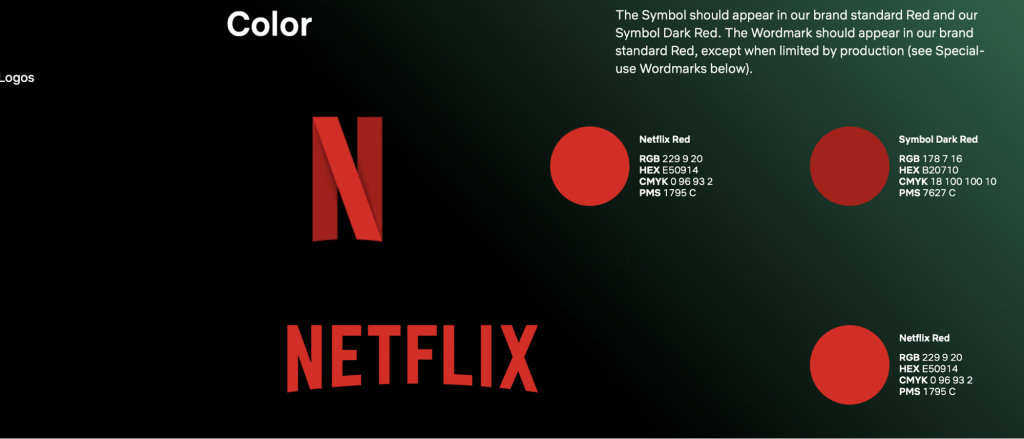
Source: brand.netflix.com
The Netflix branding guide is nothing if not comprehensive. It clearly specifies all the brand’s visual elements along with short descriptions as to why or how they should be used. The guide also explains that the N symbol should always appear in the signature color for better brand recognition and consistency. In addition, it also explains that the “Netflix” wordmark is also sometimes used in low-awareness markets.
In this branding guide, you get clear instructions on using clear space and why it should be used. You can also find contrast ratio rules and background preferences for improved readability. The brand clearly specifies how the logo and wordmark should and shouldn’t be displayed and even provides real-life examples to get the message across more clearly.
2. GoPro
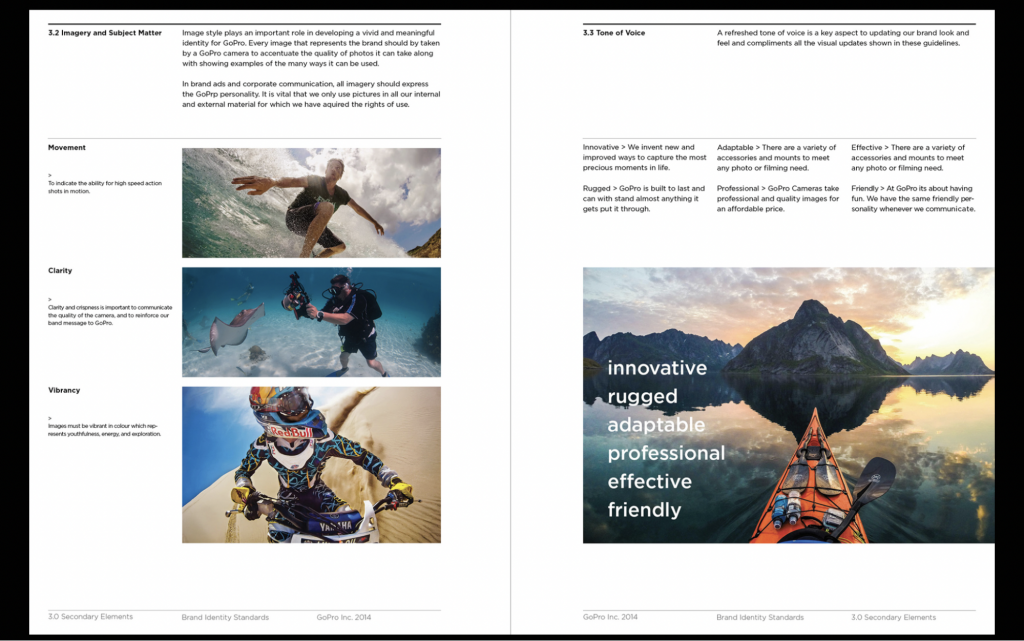
Source: behance.net
As a brand that’s big on imagery, GoPro’s branding guide stresses on the importance of image style for their brand identity. The guide includes multiple variations of the brand logo along with color palettes and color variations as well as typefaces and iconography. In addition, GoPro stresses that all the images representing the brand should be taken using their camera to emphasize the product quality and potential.
To properly express the GoPro personality, the guide suggests considering the following key elements:
- Movement, to showcase the camera’s ability to capture high-speed action shots
- Clarity, to accentuate the camera quality
- Vibrancy to represent the core GoPro qualities of youthfulness, energy, and exploration
3. Sprout Social
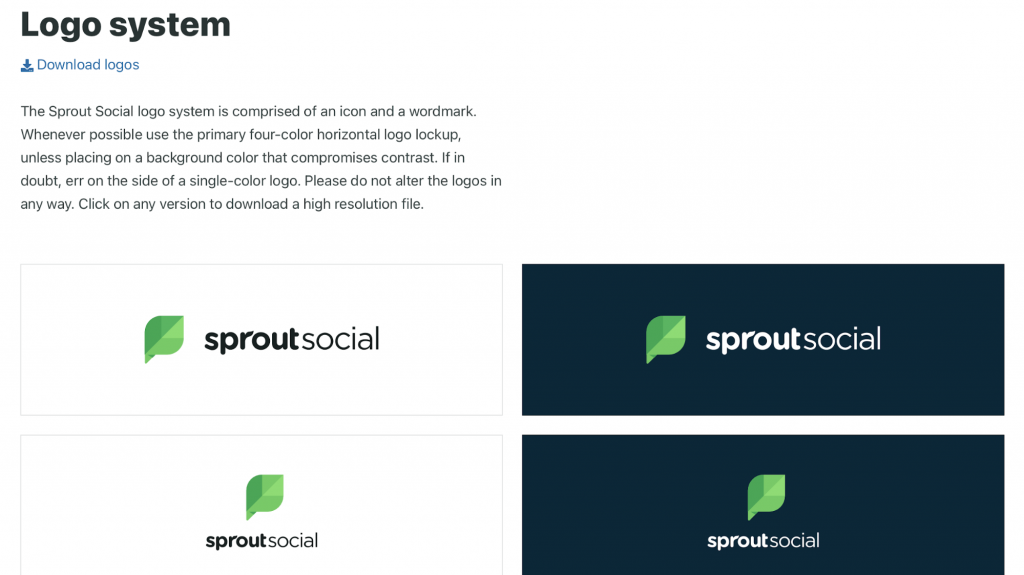
Source: seeds.sproutsocial.com
Ease of use is a major focus for Sprout Social. To follow through with this, the brand makes it easy to download different brand assets in their branding guide. You can simply click on any of the logo versions or imagery to download a high-resolution file, saving you the trouble of downloading a zip file, unzipping it, and then finding the version you want to use.
The guide also includes brief instructions on how to use the logos and what you need to avoid, so it doesn’t overwhelm you with too many details. For anyone who wants to use the Sprout color palette, the guideline simplifies it by letting you copy any swatch to your clipboard by clicking on it.
4. Shopify
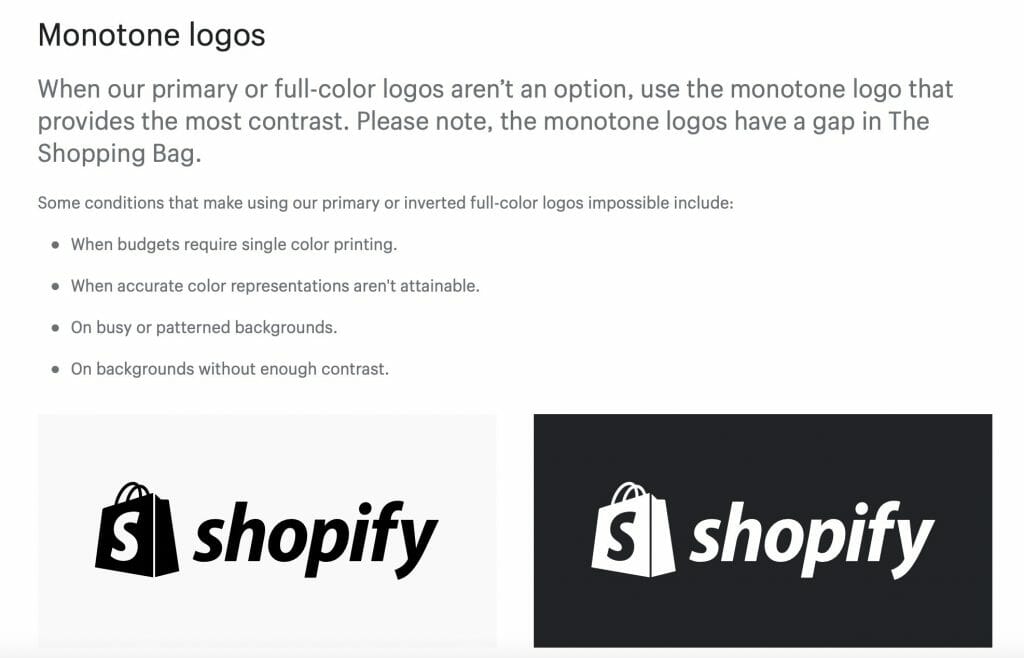
Source: shopify.com
As a global leader in ecommerce platforms, Shopify also makes sure to lead in terms of brand guidelines. Their branding guide is extremely comprehensive and descriptive, providing partners with detailed instructions on how to visually represent their brand.
What stands out the most is the list of conditions in which it makes sense to use variations of the brand logo. Shopify clearly states when it’s acceptable to use the monotone logos such as in situations where budgets allow for only single-color printing. Similarly, they also make a list of circumstances in which you can use only the shopping bag without the wordmark such as when there’s limited space.
5. Zendesk
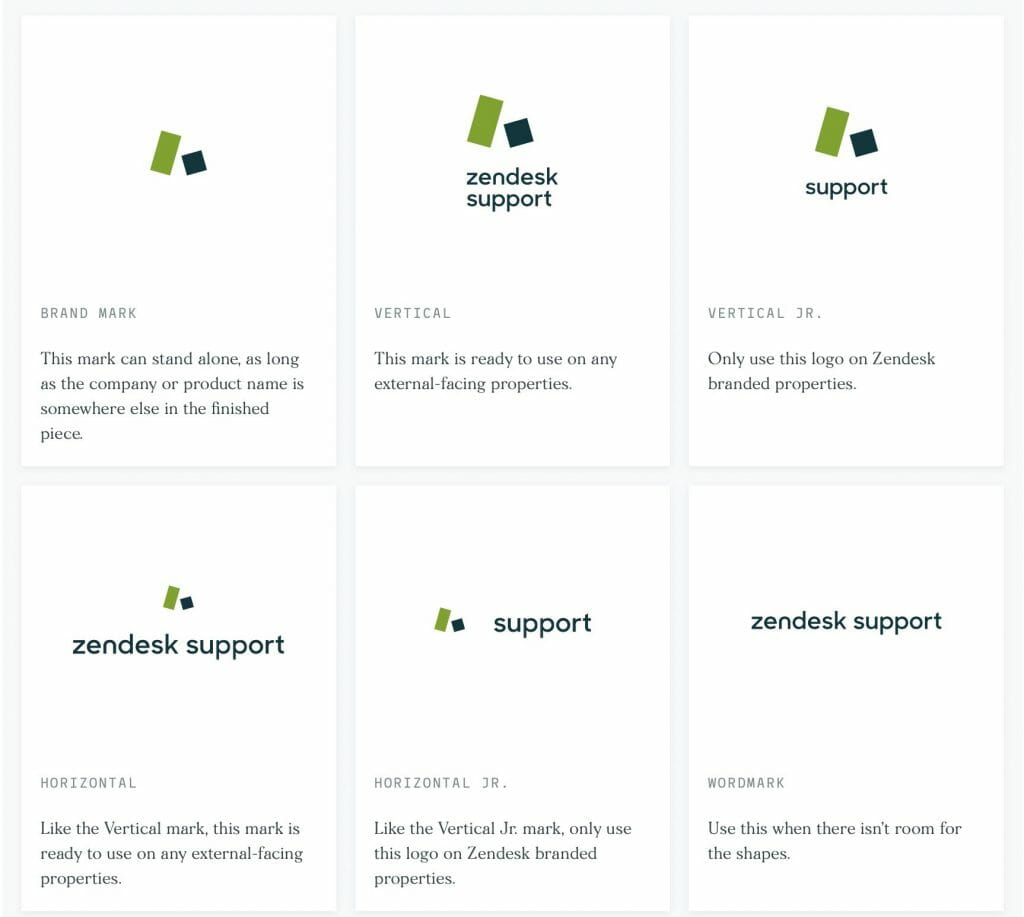
Source: brandland.zendesk.com
Zendesk begins their branding guide by talking about the “Relationshapes” that make up the logo marks for their various products. They establish the significance of these Relationshapes by explaining that each logo mark is created using two shapes that represent two people. This helps you understand that the Zendesk logo marks aren’t just basic shapes created solely from a design aspect.
The branding guide provides different variations of the logo mark for each Zendesk product. It also explains when each variation can/should be used. For example, the Vertical Jr. and Horizontal Jr. can only be used on Zendesk branded properties since they don’t include the wordmark. This doesn’t leave you figuring out which variation to use since the guide clearly explains the rules.
6. Gorgias
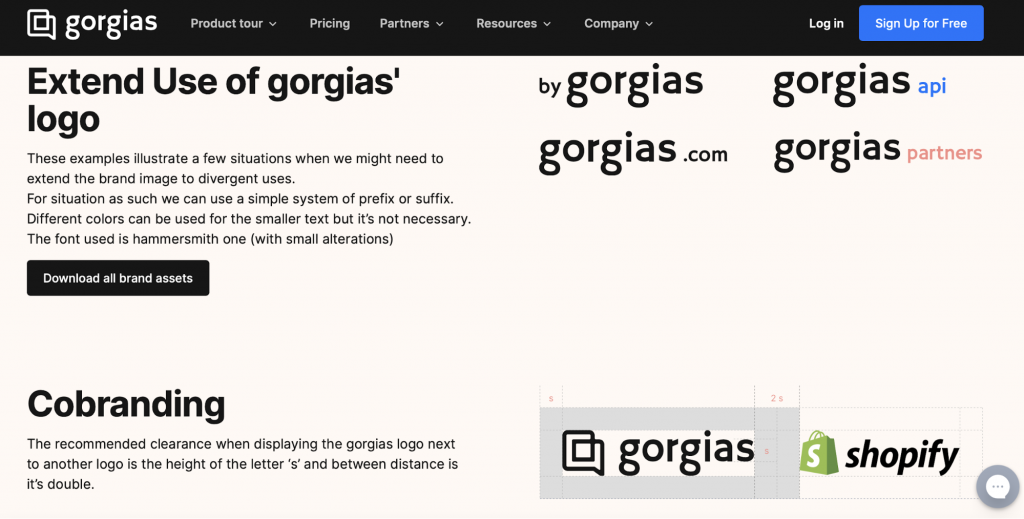
Source: gorgias.com
Gorgias takes care to provide very detailed instructions on how the brand should be represented both in and outside their brand communications. The branding guide specifies that the most preferable logotype is the dark version. It also provides an alternative option in case this version doesn’t work with the rest of the imagery or background.
Additionally, it illustrates a few situations in which the brand image has to be extended. The branding guide explains how a prefix or suffix can be added using the preferred font and gives permission to change the color of the smaller text. It even includes specific measurements for when the Gorgias logo has to be used alongside another brand logo in case of cobranding situations. By getting very specific with their instructions, the brand leaves little room for confusion and makes it easier for everyone to accurately represent the brand.
7. Venmo
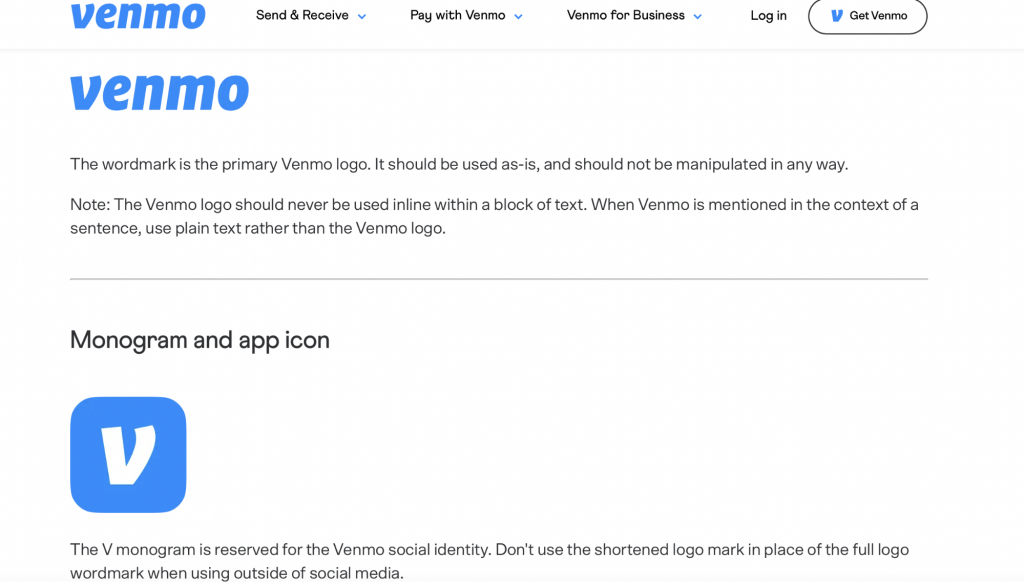
Source: venmo.com
Venmo keeps their branding guide clean and to the point. The instructions are simple and minimal, without going overboard with details. They clearly specify when the wordmark should be used and how it shouldn’t be used. The guide also mentions how the V monogram should only be used for the brand’s social identity.
In the branding guide, you can find instructions on logo spacing and clear space to help ensure branding consistency. It also specifies the minimum size for the logo to maintain brand visibility. Beyond that, Venmo doesn’t overwhelm or confuse you with unnecessary or too much information.
8. Honey Photographs
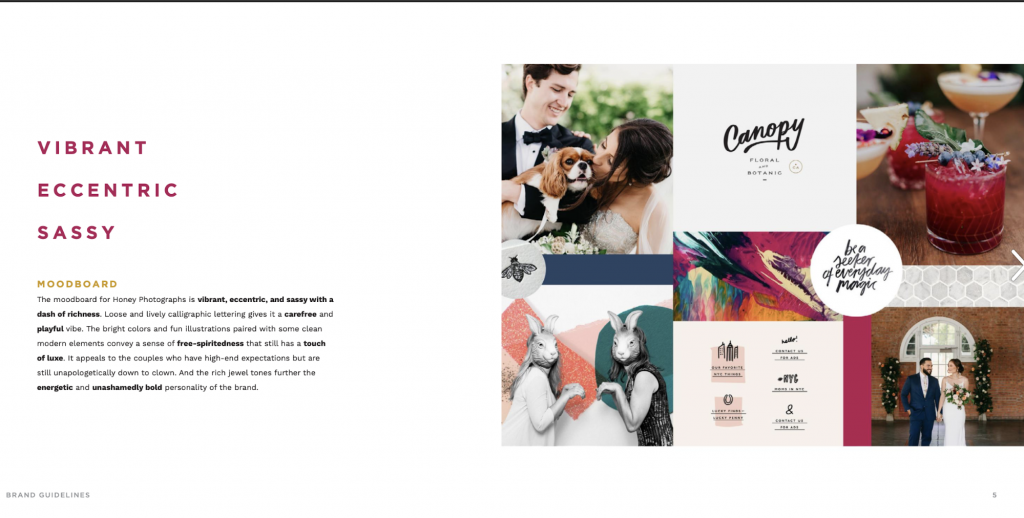
Source: issuu.com
Honey Photographs is a leading wedding photography team based in San Diego. The team focuses on capturing spontaneous and unique moments while being big on vibrance and eccentricity. This is why the inclusion of a mood board in their branding guide makes so much sense as it perfectly demonstrates the kind of “vibe” captured through their work.
This mood board displays the perfect balance of luxe and free-spiritedness that the photography team tries to capture. It helps you visualize how their work is perfect for couples who are unapologetically themselves while also having high-end expectations. Essentially, it showcases the kind of “mood” that their wedding photographs exude.
9. BadgerDAO

Source: badger.com
The branding guide for BadgerDAO takes care to explain the various brand-related terms that people should know. This includes information on how the community is called “Badgers” and how their native governance token should be called “BADGER,” to distinguish it from the name of the organization. With explicit explanations on what each term should be used for, the company leaves little room for confusion and ensures that their preferred terms are used for branding consistency.
The branding guide also explains the brand typeface they use and why they use it. As an organization that aims to bring Bitcoin to DeFi, BadgerDAO uses the Satoshi typeface, aligning it with the pseudonym for the creator of Bitcoin, Satoshi Nakamoto. Additionally, the guide explains the different weights in which the typeface is available and what it’s suitable for.
10. American Express
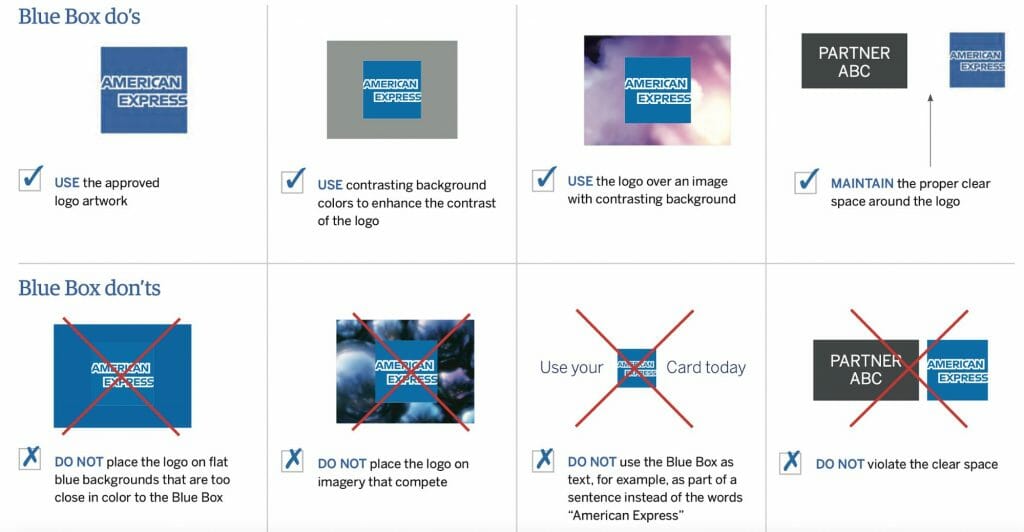
Source: secure.americanexpress.com.bh
American Express has a highly comprehensive branding guide where you can find all the information you need about how to represent the brand. Making your brand style guide very comprehensive is important when you’re one of the largest multinational companies with over 63,000 employees and generating $43 billion in revenue. This can ensure fewer mistakes even though the information may initially come across as overwhelming.
To get the message across more clearly, the guide includes visual do’s and don’ts that clearly demonstrate how the logo should be used, how the taglines should be presented, and what photographs should be used. Having these visual examples can help you minimize misinterpretations of your instructions. For example, the guide clearly demonstrates the type of stereotypical images that shouldn’t be used vs. the authentic ones that should be used.
11. Bambu
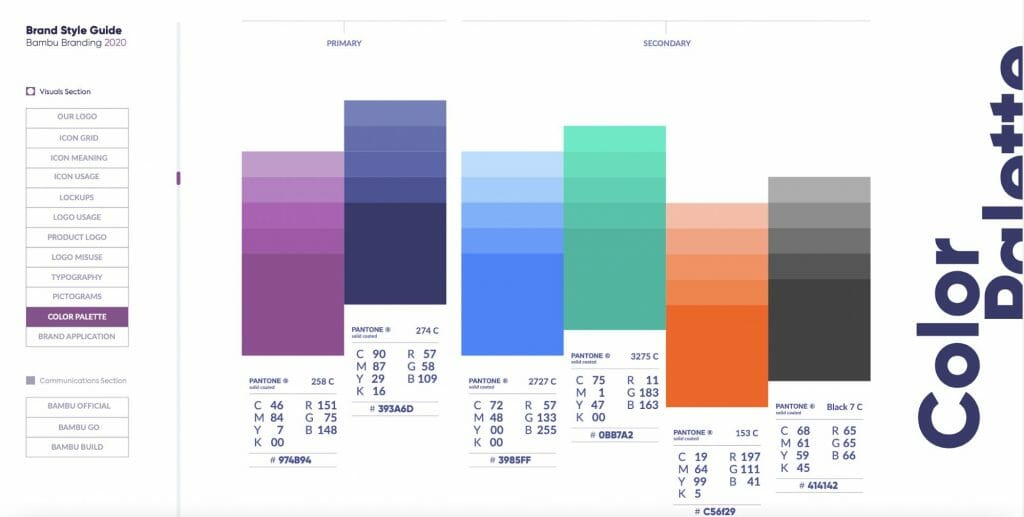
Source: bambu.co
Bambu neatly categorizes their branding guide into three sections–visuals, brand application, and communications. This offers ease of navigation and allows teams to easily find the information they need based on what they need it for. For example, someone who’s just joined the content team can go straight to the communications section to learn more about the brand’s editorial style and voice they want to capture.
Moreover, the branding guide is clean and simple, with lots of visuals to improve comprehension. Bambu includes plenty of graphs and visuals to explain the significance of their branding elements. For example, the guide talks about how the icon was created keeping the golden ratio in mind and to convey a purposeful design. You can also find visual examples of the different brand applications such as how the logo might be used in business cards and brand merchandise.
12. Afterpay
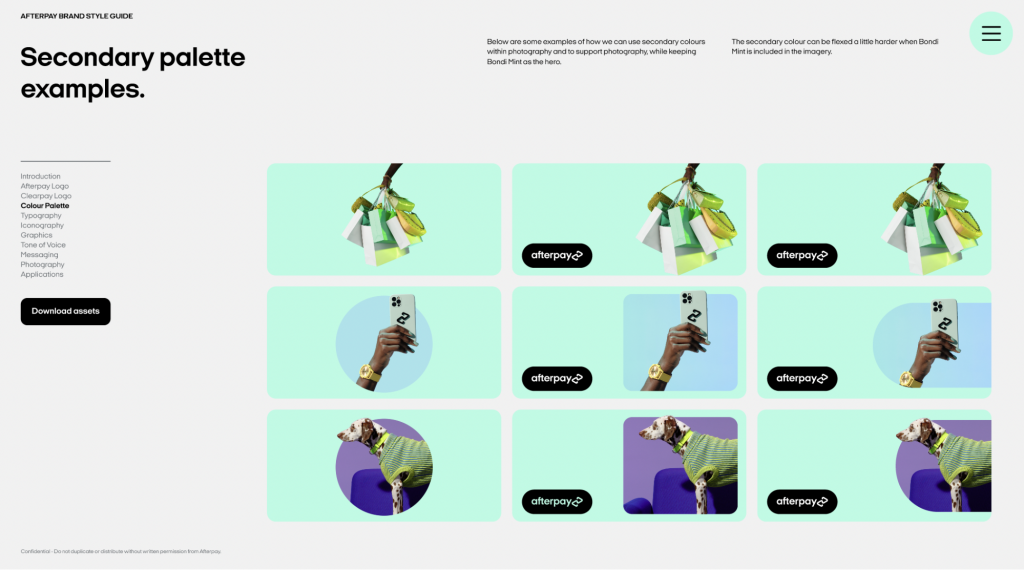
Source: figma.com
Afterpay is a fintech company that works closely with other brands to offer their buy now-pay later service to shoppers. As such, they’ve created a very comprehensive branding guide to ensure that their partners can accurately represent their brand on their websites and brand communications. They start from the meaning behind their loop logo and go into detail about how the logo can be supersized or minimized and incorporated into various designs.
The branding guide stresses how the brand has their own brand color called Bondi Mint, which is very fitting considering that the company’s based in Australia. They also provide a secondary color palette and include guidelines on how these secondary colors should be used alongside the hero Bondi Mint. Since they work with a variety of companies that have their own branding and style guides to follow, Afterpay also offers several examples of how their logo should be used in cobranding scenarios.
Create the Perfect Branding Guide
From the above branding guide examples, you can get a clear picture of what you should include in your brand style guide. Remember that your brand identity should extend to your branding guide, so you can create something that’s truly yours.
Frequently Asked Questions
What should a branding guide include?
A branding guide should include information about your brand’s value and mission. It should also include rules on how to represent your brand through visual and written communication.
What are examples of brand guidelines?
Brand guidelines typically include information about the brand’s logos, typography, color palette, voice and tone, and other brand-related imagery.
How do you develop a brand guide?
You can develop a brand guide by defining your brand identity and then developing the rules to accurately portray that identity to the rest of the world.
What are basic brand guidelines?
Basic brand guidelines provide information on how to accurately represent the brand through logos, colors, typography, and voice.
What is the purpose of a brand guide?
A brand guide helps to strengthen brand identity by setting parameters to consistently and accurately represent your brand so that it’s instantly recognizable and trusted by your target audience.
